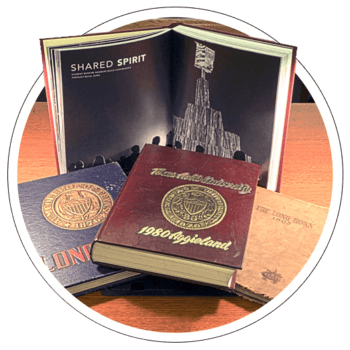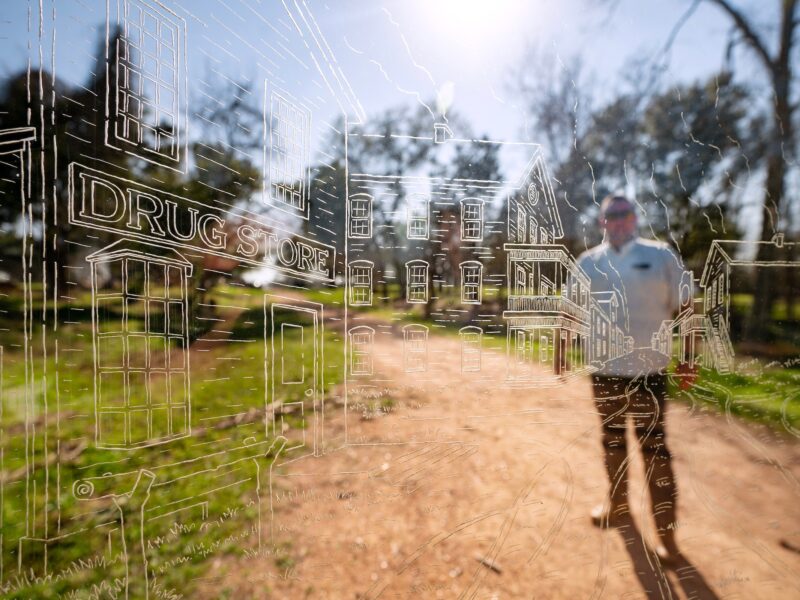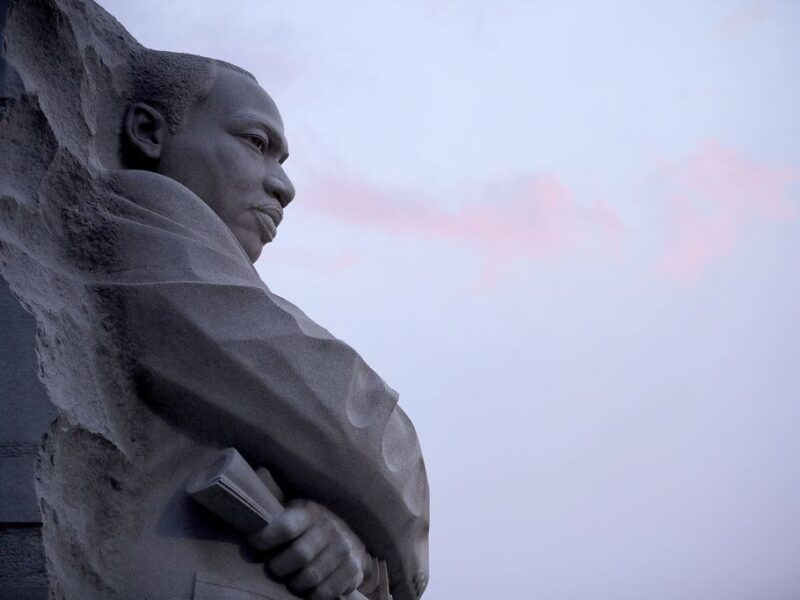Yearbooks Online For The First Time

For the first time ever, Texas A&M University’s yearbooks are available to browse and search for free online in the Texas A&M University Yearbook Collection produced by the University Libraries.
The digital yearbook collection enables users to explore Texas A&M’s rich history with keyword searches, such as names of people, organizations and more. The University Libraries’ preservation unit scanned each page of every yearbook using OCR (optical character recognition) software and Internet Archive BookReader, which allows keyword searches and the ability to flip through each page for online open access.
“If you want to browse the collections going page by page, or use the search box function, it’s really easy to use,” said Julie Mosbo, William & Susan Ouren Director of Preservation. “This is a great piece for alumni, and to be able to show the collections we have and the resources we have to make these collections more widely available.”
The digital collection contains all Texas A&M yearbooks produced, with the exception of the four most recent years, starting with the first yearbook published in 1895, the Olio. No yearbooks would be published again until 1903, which donned a new name: The Long Horn. In 1949 the student body elected to rename the yearbook to the Aggieland. The 1949 Aggieland editors addressed the name change in the first volume, stating, “This book is essentially the same as the many Longhorns that have preceded it, but it carries the name, you, the student body, chose to give to your yearbook.”
“With the digitization of the yearbooks we are able to provide access to a source of A&M history that is widely requested by our patrons,” said Greg Bailey, university archivist. “This will allow us to reach a greater number of former students, alumni and their families as they look to research their time at A&M.”
All of the original yearbooks, up to the most recent publication, can be viewed at Cushing Memorial Library and Archives. As the university archive, Cushing Library houses a wealth of historical Aggie artifacts — including original copies of The Battalion, which is in the planning stages of being digitized to complement the yearbook collection. The digitization efforts of the University Libraries are part of an ongoing initiative to make more digital collection resources at Cushing Library available to the public for free.
“Whenever you have a high demand to see physical items, scanning is a great way to help with the preservation of the item,” Mosbo said. “That way, if people want to look at the images they can look at them online. If they really want to see the original they can come into Cushing and go in the Reading Room and request them.”
Funding for the Texas A&M University Yearbook Collection was provided by the Class of 1949. To support the Digitization Project and the University Libraries, contact Adelle Hedleston ’88 at adelle-h@library.tamu.edu.
The Texas A&M University Yearbook Collection can be viewed at: library.tamu.edu/yearbooks.
Media contact: James Solano, Texas A&M University Libraries, agco2012@library.tamu.edu.





